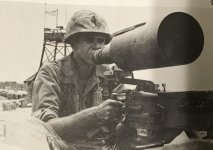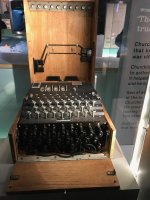LoboGunLeather
US Veteran
Some where I don't remember in 1968, an aircraft flew by and a finger of pale pink tracers reached up to it.
The airplane answered with a firehose of tracers. It was Spooky!
Also known as Puff the Magic Dragon (a popular folk song of the period). A cargo plane equipped with 7.62mm automatic cannons (mini-guns) capable of a cyclic rate of nearly 6000 rounds per minute each (although typically tuned-down to around 2000 to avoid burning up the barrels prematurely). C-47 (the venerable military version of the DC-3), C-119, C-130 Hercules (now more popularly known as the AC-130 gunship). At least one iteration was tried with a 105mm howitzer mounted on the tail ramp; never saw that personally.
From the ground it was usually possible to hear the aircraft engines, but night-time engagements seldom allowed a view of the aircraft. When the General Electric mini-guns fired the sound was similar to a large zipper being pulled, no sense of individual shots. Every 5th round was a tracer so the incoming fire appeared very much like a red laser beam from the sky to the ground. I would compare it to the finger of a very angry god.
Gunships (UH-1, AH-64 helicopters) were great for close support. Attack aircraft (F4, F105, USAF, USN, USMC) could provide extra punch with 20mm cannon, bombs, napalm. Puff the Magic Dragon could assume an orbit around a ground position and loiter for an hour or two, in radio contact and responding to specific directions for shifting fire to the necessary places, away from friendlies on the ground.
Awesome weapon system! No matter how much we requested there was never an invoice for the thousands of rounds delivered. At 30-plus rounds per second, per gun, my paltry salary would never be enough to pay for what I was asking for.




